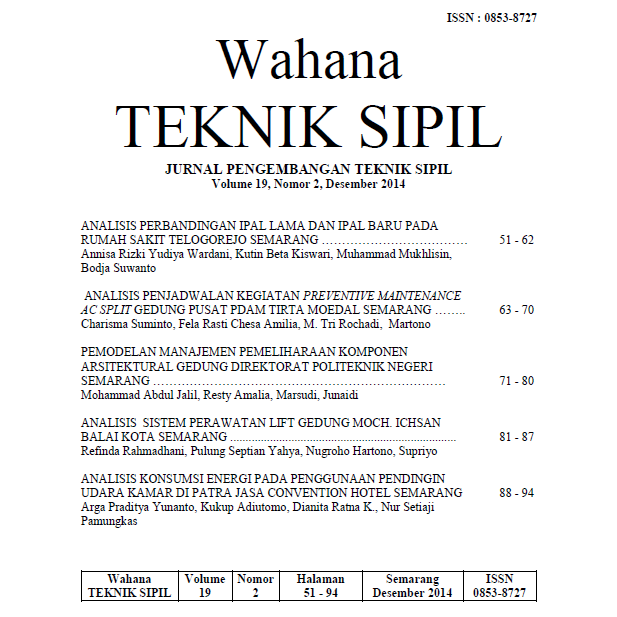Pemodelan Manajemen Pemeliharaan Komponen Arsitektural Gedung Direktorat Politeknik Negeri Semarang
DOI:
https://doi.org/10.32497/wahanats.v19i2.135Keywords:
modeling, management, maintenance, repairAbstract
Government buildings are buildings used for official purposes. Condition of the building must be taken to ensure that the activities there are running smoothly. One of the solution by doing some maintenance management well. This is related to maintenance activities at the Directorate Building of State Polytechnic of Semarang as one of public universities in Semarang. The purpose of this study is to enhance building maintenance management by arranging modeling Standard Operational Procedure (SOP) for the maintenance and care, especially on architectural components of Directorate Building State Polytechnic of Semarang. Observations on object research, literature study, testing on SOP modeling and interviews are some methods of research to be conducted in this study. All data were analyzed which then bring out some output SOP maintenance modeling component architecture which provides manual book, routine and periodic scheduling maintenance actions, flow charts and also checklists form. Where the manufacturing modeling of SOP will be tested is based on Permen PU No. 24/PRT/M/2008 on the Guidelines of Building Maintenance and Repair and also other related regulations.
Downloads
Published
Issue
Section
License
Authors who publish with this journal agree to the following terms:Authors retain copyright and grant the journal right of first publication with the work simultaneously licensed under a Creative Commons Attribution License that allows others to share the work with an acknowledgement of the work's authorship and initial publication in this journal.
Authors are able to enter into separate, additional contractual arrangements for the non-exclusive distribution of the journal's published version of the work (e.g., post it to an institutional repository or publish it in a book), with an acknowledgement of its initial publication in this journal.
Authors are permitted and encouraged to post their work online (e.g., in institutional repositories or on their website) prior to and during the submission process, as it can lead to productive exchanges, as well as earlier and greater citation of published work (See The Effect of Open Access).






